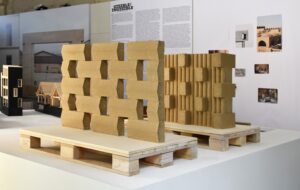|
|
||
|
Ahead of the Shenzhen Biennale of Urbanism and Architecture next week, the event’s co-curator, Alfredo Brillembourg of architecture practice Urban Think Tank, explains the continuing significance of China China is urbanising at a huge rate. People are arriving in cities in massive numbers and cities are not prepared for them. Meanwhile, city governments and mayors are focused on making more city – it’s like a giant hamster wheel: more finance, more insurance, more building, more revenue, more finance. Mayors compete with each other to prove they are creating more wealth than other cities by building museums, skyscrapers and highways, without thinking about the environment or the future. The big question is, what is going to happen in China in 20 years? Is the construction the right kind of construction? Are these high-rises, these highways dividing the city and tearing down the urban villages, creating the right kind of city? It’s a similar story elsewhere. Around the world, city-making is an industry that needs to be fed, from the bankers to the developers, to the materials providers. And while that industry has grown, I don’t think cities are getting better – if you look at Caracas, São Paulo or Buenos Aires, I guarantee that they are not better than they were in the 1950s. London may have grown in terms of GDP, but it’s also grown in class division. The fact is that city governments are not producing models for the way people need to live. For example, in many places tall apartment blocks were built fast with no thought to the street level or job creation, and the same things are happening in China – they are building high-rises everywhere, but then they end up being ghost towns, because people eventually leave. Rather than simply looking at density and verticality, we need a measurement for social vibrancy. But do we really know how to make cities? Do we as architects have a language, to explain to politicians or even to ourselves what it is we are doing? We don’t even have the capacity to explain what’s right and wrong. What we need is a set of criteria, a set of values that outline the kind of city we need to produce, so we can judge good or bad urbanism, and what is important. The Shenzhen Biennale will be all about how we “relive” the city – that is, how we rethink how we live in cities. Grand masterplans – the superhighways cutting through and dividing cities – have failed. What we need today are precise interventions. We’re for rebuilding the cities on the existing footprint, for taking existing urban conglomerations and villages and trying to keep their structure. For example, informal, poverty-stricken parts of cities need infrastructure, water, parks and schools, but in the least invasive ways possible, so as not to disrupt life that’s already there. Shenzhen, for example, is famous for its informal, urban settlements in the middle of the city, but for modernisation, sanitation and political reasons the Chinese government has been knocking these down. It turns out now, though, that these villages are what people are flocking to the city to see. The life on these streets is amazing – they work as urban, dense villages, and they are creative places, too. At the same time, we want to liberate things like the rigidity of zoning, which prevents experimentation, for example, programming public space more informally by building streets that can take cars, pedestrians or bicycles at different times of the day. What I would like to see is cities with certain formal aspects – transportation, sewage and infrastructure – then a whole other layer of freedom for people to adapt and to incorporate themselves into the city. We also want more transparency in the development process, so we can all participate in the production of the city. Large developers have little stake in a neighbourhood, so they take decisions based on the bottom line. We want to know, who are these developers? Make your decisions public and let us all comment. We think that the rest of the world will eventually start to look like Caracas, São Paulo or Bogota. Latin America is 89% urbanised and migration to the cities is occurring there at a phenomenal speed. Governments can’t build fast enough, so people are building for themselves. Around the world, as populations grow, people will want to take more control over their environments and there will be a progressive breakdown of centralised systems. I believe China wants to enter into a dialogue. They are interested and they want to experiment. They are using events such as the Shenzhen Biennale to speak to an international audience, so we need to propose ideas. You could say that the great Chinese experiment is the greatest ever experiment in urbanisation – building all these cities at the speed they are building. We want to influence what those new cities might be like. |
Words Alfredo Brillembourg |
|
|
||




















